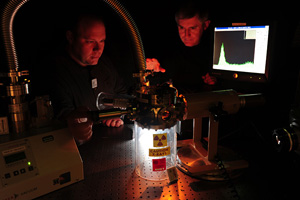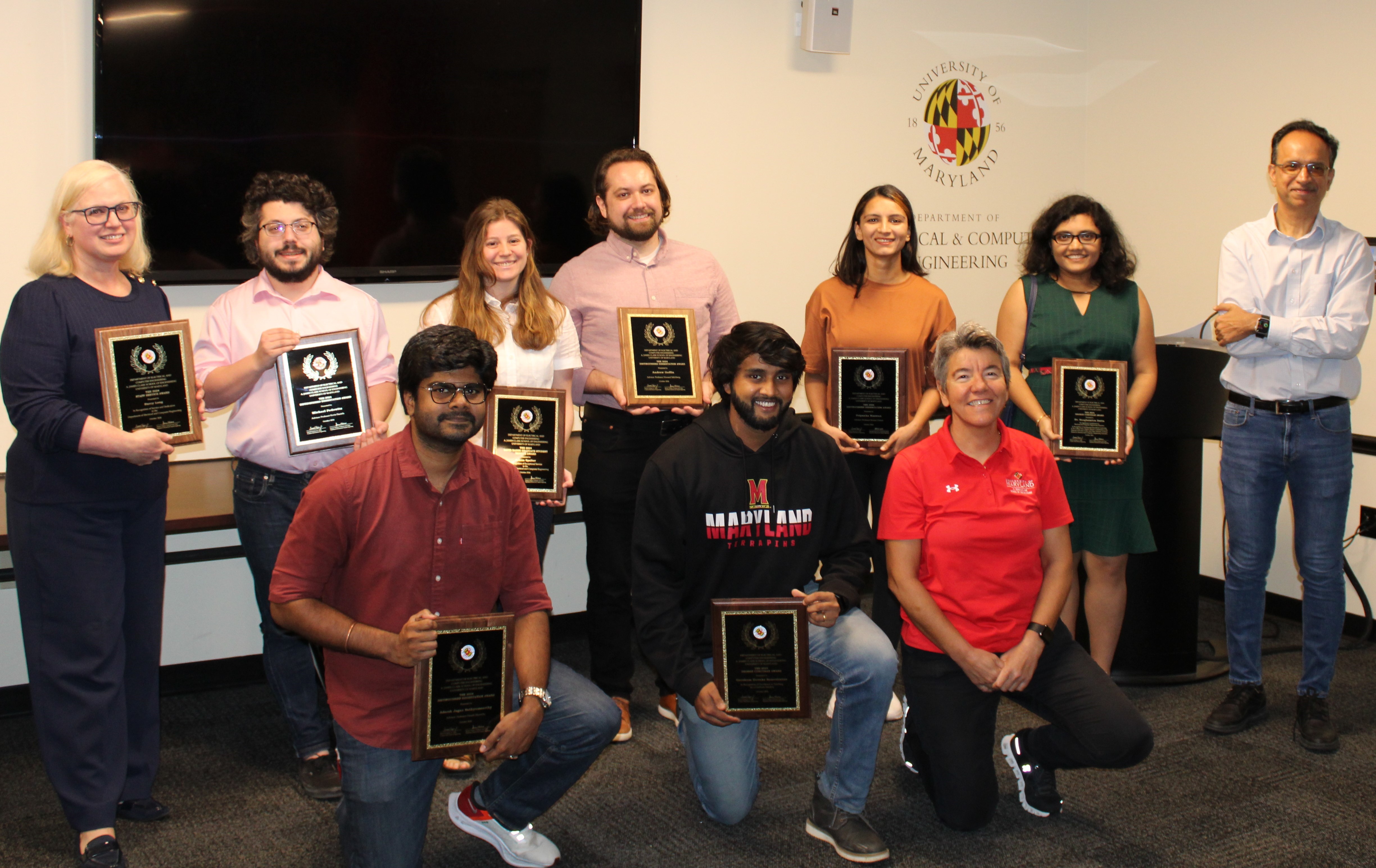News Story
Koeth, O'Shea Featured for Research on "The Physics of Scotch Tape"

Tim Koeth (left) and Patrick O'Shea (right) in the University of Maryland Electron Ring Laboratory. Photo by Tim Koeth.
Tim Koeth, a faculty researcher in the University of Maryland's Institute of Research in Electronics and Applied Physics (IREAP), and Electrical and Computer Engineering (ECE) Department Chair Patrick O’Shea were recently featured for their unusual work involving this ordinary office supply in Symmetry a magazine published by FermiLab, a national lab in Illinois run by the Department of Energy, and the Stanford Linear Accelerator Center (SLAC), a National Accelerator Laboratory at Stanford University. Their research, described in an article entitled “The Physics of Scotch Tape,” explores how Scotch tape creates X-rays as it unrolls, and the possible applications of this discovery, which could lead to a transportable and inexpensive X-ray machine, offering potentially limitless possibilities and benefits.
The Maryland researchers expanded research conducted by UCLA physicist Seth Putterman, whose experiment was successful enough to X-ray an entire finger. Koeth and O'Shea used a unique method, building a vacuum chamber to house the roll of tape, a phosphorescent material that glows when electrons hit it, and an X-ray detector, all with bits and pieces they found lying around the lab.
Koeth was curious about the X-rays’ source. While heavy metals such as tungsten often emit X-rays when hit by fast moving electrons, he was surprised that something as simple as tape’s adhesive could produce them. The answer, he thought, might have to do with some sticky physics in which the ripping of the tape creates a strong electric field.
To illustrate this, Koeth suggests a simple experiment: Sprinkle glitter on your desk; unspool a roll of Scotch tape over it; and watch as an electrical field is formed and sucks up the sparkles.
In a vacuum, however, the electrons don’t stop until they slam into a solid surface and emit a burst of X-rays, a phenomenon called bremsstrahlung, or “breaking radiation” in German. When the researchers unspooled the tape inside the vacuum chamber, the green glow from the phosphorescent material told them that a large number of electrons were hitting it.
After determining that these electrons were strong enough to create X-rays, Koeth and O’Shea have a number of ideas for future projects: determining whether they could increase the accelerating voltage of the field, studying the properties of the tape’s adhesive, taking some real X-ray images, and integrating the components of the experiment into a usable machine.
Read the entire article at the Symmetry website.
This news story is based upon the original Symmetry magazine article, 'The Physics of Scotch Tape,' written by Sara Reardon.
Published January 24, 2011









